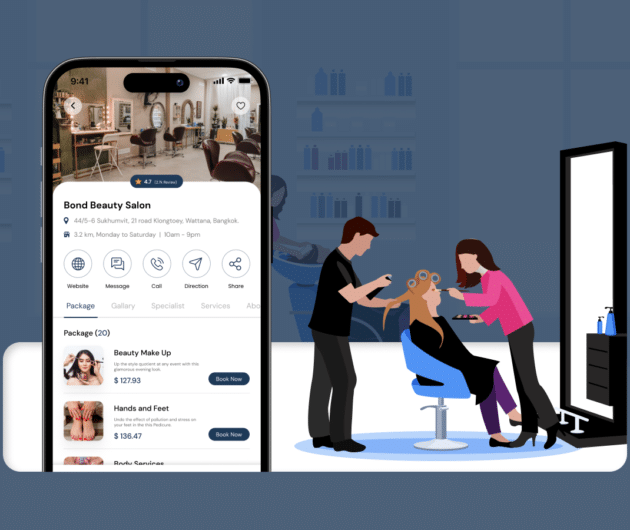Serverless Architecture for Cloud-Based App Development: Benefits and Challenges

-
Ankit Patel
- October 06, 2022
- 5 min read
Developers are on the hunt daily to find new ways that streamline the way they develop apps making it efficient so the end outcome is valuable, to say the least. This is where serverless architecture enters the picture.
It comes with a wide array of benefits for business- starting from scalability to app release taking place quicker apart from keeping costs minimal as well during the app development process.
However, to ensure that these benefits are received, the meaning of this concept needs to be understood first. We will cover this in the article here.
After reading it, you will gain insight into this concept and understand its business benefits. Thereafter, you will know the reasons it is a boon in disguise for entrepreneurial setups.
So let’s begin.
What is Serverless Architecture?
Serverless architecture is a software design approach that helps developers easily and conveniently build and run services without the requirement of managing the underlying infrastructure.
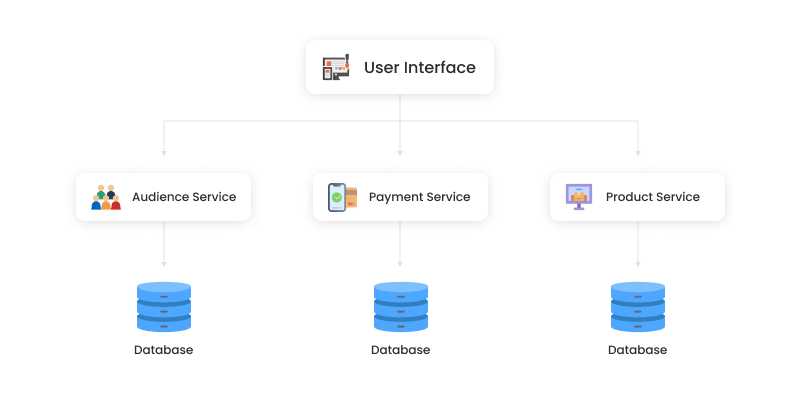
This makes it easy to perform app communication for users apart from getting business logic access as well, side-by-side. Developing a single-page app becomes easier with serverless cloud computing.
This is due to the features it has in them some of which are listed below.
What Does Serverless Architecture Constitute? Its Features
Serverless architecture comes with a wide array of features, five of which are extremely popular.
- Has less dependency on any form of hosting or servers.
- Provides access to Functions as a Service to ease buildup, execution, and app administering.
- Is elastic to allow scalability to take place smoothly.
- Is distributed thereby making it easy to allocate the sub-services to different servers.
- Is event-driven, hence features are easy to expand.
Now let’s check the market stats that illustrate the popularity of serverless cloud architecture.
Market Stats for Serverless Cloud Architecture
Check out these numbers that give a fair value to the popular nature of serverless cloud architecture.
- The valuation for the serverless computing market was $27.29 billion in 2020.
- The revenues are predicted to become $36.84 billion by 2028.
- CAGR in the market is expected to take place at 23.17% between 2021 to 2026.
Looking at the numbers, you can get an idea that the value of the market is certainly quite lucrative indeed.
So the question arises, what are the benefits of this model that has led to more and more organizations adopting its use? We have enlisted the reasons below.
Benefits of Serverless Architecture for Developing Cloud-Based App
Check out some of the prime benefits of serverless architecture from the below image.
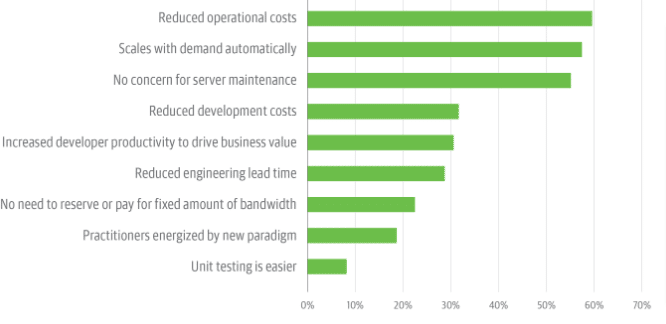
Image source: newrelic.com
As you can observe, there are a wide array of benefits related to adopting the model. Let us understand them in detail.
- Reduces Cost
- Boosts Scalability
- Accelerates Deployments
- Eases App Functions
- Guarantees Innovation
- Results are Faster
In any organization – human resources and infrastructure are two prime cost elements. This is where serverless cloud architecture comes in handy as through its pay-as-you-use model, the budget that has been mentioned above goes down to a huge extent.
Through the model, apps can easily scale based on user demands, usage, and business needs and requirements as they take place. Thus, large request percentages become flawless to handle and process, respectively.
The requirement for code upload to servers for back-end configuration gets eliminated as the same has its pace accelerated thereby making it flawless to release different versions. Therefore, in a situation when a new feature gets included, users can access it in real-time.
As a result of these solutions not being hosted on any specific origin server helps the code to be run from anywhere. Therefore, app functions from servers nearby become a seamlessly simple task too. Hence, the latency rate is reduced thereby lowering data transmission and process time too.
By adopting this architecture, it becomes easier for entrepreneurs to reduce the dependency on legacy systems completely. They only need to place their thoughts on innovation. This is due to the infrastructure needs getting addressed by the providers only.
Tasks such as implementation and maintenance are easier on the serverless cloud architecture. Therefore, innovation takes place at an accelerated pace, and the results of change become faster to observe. Therefore, pivoting is free which in turn proves beneficial for businesses.
There have been some prominent names in the world of business that have observed their performance streamlining through the adoption of the model.
Read Also: The Ins and Outs of Creating a Mobile Cloud Application
Businesses that Embraced Serverless Cloud Architecture
Some popular businesses observed their operations getting automated and their performance improving a great deal through the adoption of the model.

- Netflix powered by AWS Lambda saw its media encoding process getting automated through the event-based triggers.
- Nordstrom through creating an open-source serverless architecture store based on AWS Lambda to showcase the use of Kinesis and other AWS services.
- Coca-Cola through its vending machine made its first experimentation with serverless technology. This is by the payment structure calling the AWS API Gateway to complete the transaction.
- Zalora through merging Lambda and AWS capabilities ensures no issues take place during the process of scaling the request count.
Now, you need to note that its adoption has some challenges attached to them as well.
Challenges Related to Adopting Serverless Cloud Architecture
Some pitfalls may come in the way during the adoption of serverless cloud architecture when used for cloud-based app development.
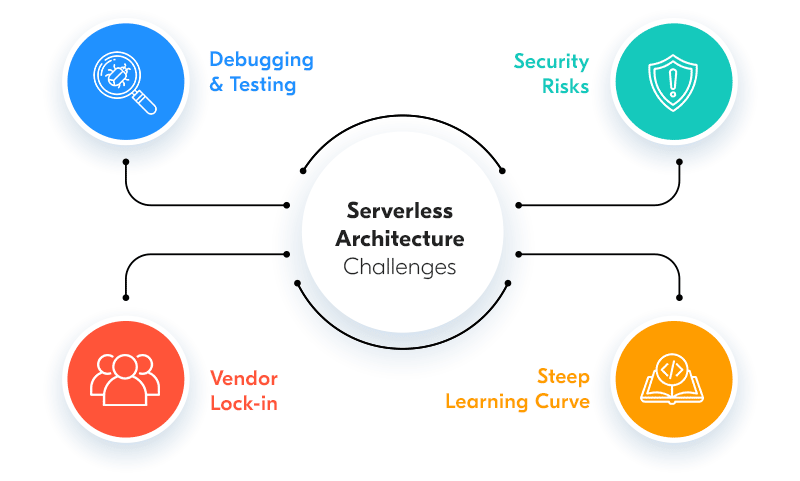
- Debugging & Testing
- Lack of Data Abstraction
- Learning It is Hard
Detecting the functioning of the back-end, locating the source of errors when they occur in serverless cloud architecture, and performing integration tests are difficult as the environment is challenging to replicate.
With multiple clients accessing server at the same time, the lack of data abstraction risks is more. This increases the probability of data compromise due to faults within the infrastructure.
Despite learning resources being plenty, understanding it is a tricky and complicated business. Its implementation is challenging as it is imperative to break the monolith structure into micro-services.
So are you ready to use the model to your business advantage? Keep these pointers handy.
Read Also: Cloud-Native App: Reasons Why It Is The Future of Software Development
Points to Remember Before Embracing Serverless Architecture
You must remember some pointers and ask yourself some questions before you adopt serverless cloud architecture.
Question 1: Are you ready to use it?
Before you even embark on the journey of using the model, you need to ask yourself- Am I ready to use it? This answer is possible only to receive through your experience of using it. Therefore in case, if you utilized them in the past; you can be sure you are ready.
Question 2: How do you plan observability?
You must plan for observability. Decide how you will act. This means knowing metrics to track, the location you will send, and the tooling you will use.
Question 3: How to create a development workflow?
The third crucial question you need to ask is – how to create a development workflow. To perform this, understand everything runs on cloud-based components.
Question 4: Do I possess the right balance in determining the app structure?
This is important to have an idea to know the app structure meticulously. Take, for instance, if you are planning to deploy Lambda for every single API route, utilizing the parameter value is how the task gets streamlined.
So when is it right and incorrect to use the model?

Appropriateness of Using the Serverless Cloud Architecture
Before you use serverless architecture during cloud-based app development, make sure you keep these criteria in mind.
When to Use Serverless Architecture?
- If you plan on reducing development costs.
- In case you want automatic scaling up.
- Your apps have unnecessary server load.
When Not to Use Serverless Architecture?
- In case you require a quicker response from the server.
- If the real-time app uses WebSockets.
To sum up
Reading this in-depth guide you can understand embracing serverless architecture for cloud-based app development is a challenging task. It is therefore mandatory to keep some pointers in mind. Additionally, it is recommended to keep some criteria under strict adherence so that you know the right and incorrect scenarios for using it. With these points remembered, you can be sure to receive critical insights into the service data you manage and get a comprehensive view of the app you build. You can connect with us at XongoLab. We will create a development plan alongside inducing a design strategy and setting up a data storage environment for you so performance remains at the top always and you can seamlessly meet customer needs and allow profits to keep pouring and ensure productivity is boosted.
You may also like

How to Choose the Right Mobile App Development Company
-
Ankit Patel
Imagine this: you’ve got a brilliant app idea that could revolutionize your business, take it to new heights, and transform your entire customer experience. But without the right team to… Read More
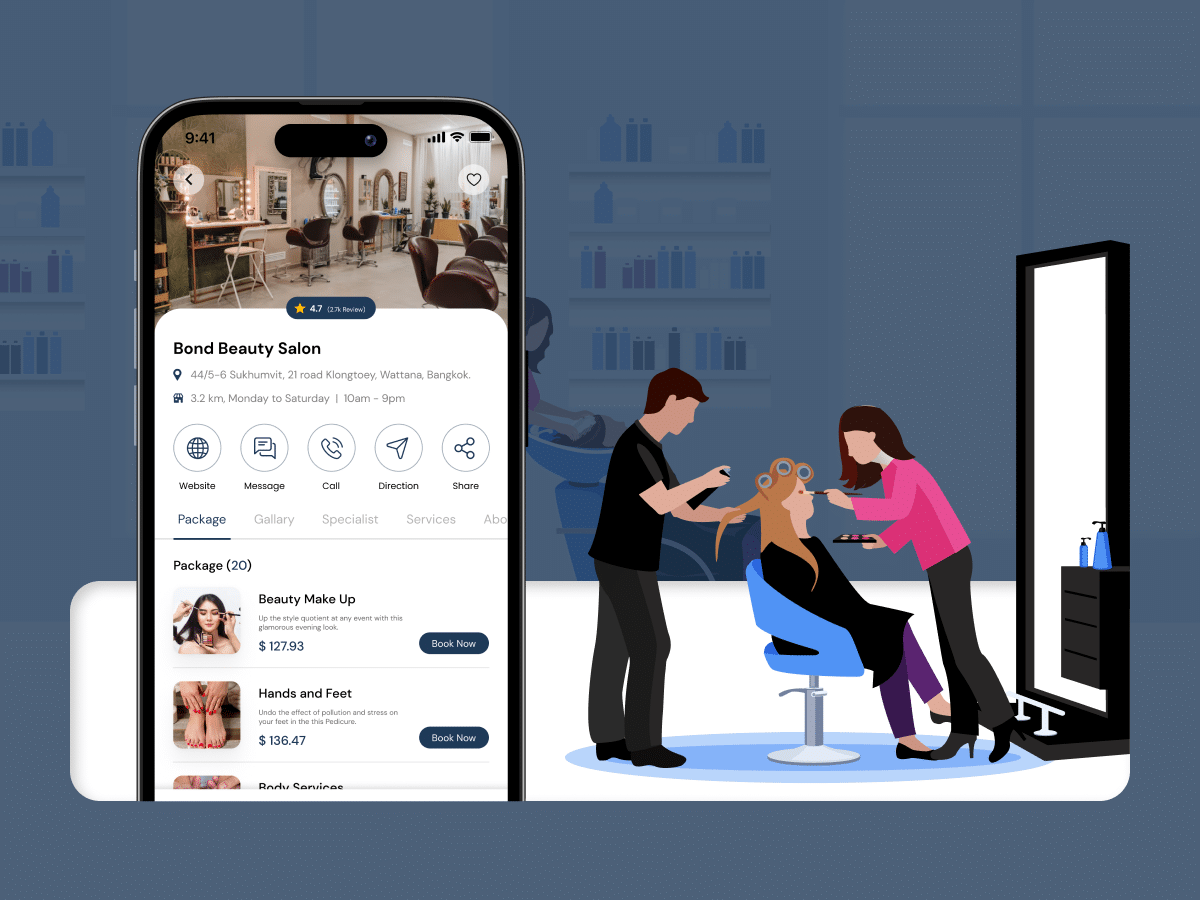
How Much Does it Cost to Build a Salon Booking App like Fresha?
-
Ankit Patel
We all have witnessed the buzz in the world of beauty & wellness, and it’s booming every day thanks to the fast-paced and stressful lifestyle. In an era where time… Read More

A Complete Guide to Hotel Booking App Development With Cost
-
Ankit Patel
Whether it’s a corporate business trip or a relaxing vacation with friends, finding the right hotel at the right time and a seamless hotel booking experience is not a luxury… Read More


